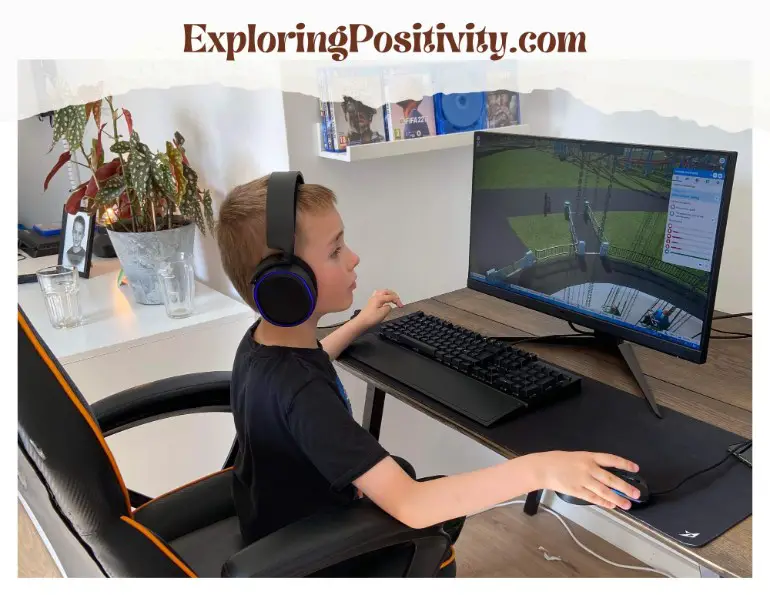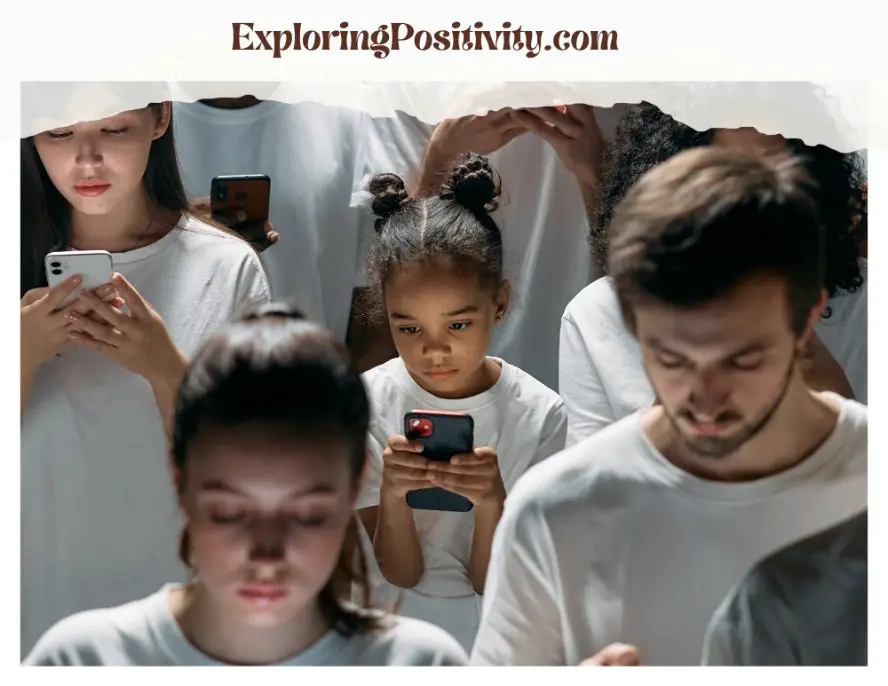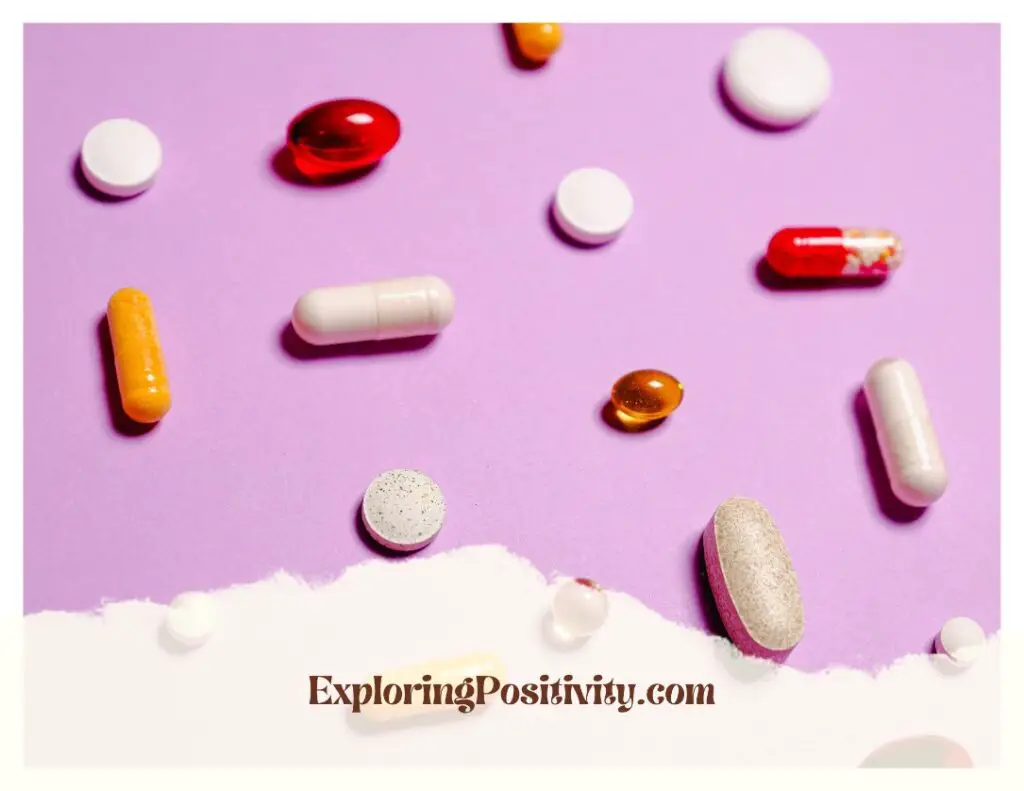We all form emotional attachments to objects, places, and even ideas throughout our lives. That childhood blanket, the favorite coffee mug from your college years, the necklace passed down from a loved one – these items hold sentimental value and can be challenging.
However, clinging too tightly to possessions can obstruct personal growth, create clutter, and lead to unhealthy hoarding tendencies. It also traps us in the past and undermines our ability to live fully in the present moment.
The good news is that you can gradually loosen the hold of emotional attachments with care and intention. This allows you to declutter your physical and mental space, process grief, and embrace change.
In this article (How to Break Emotional Attachment to Things) we will explore the meaning and impacts of emotional attachment, drawing on philosophical perspectives like Buddhism. You will also learn various practical techniques to develop non-attachment, from meditation to managing expectations.
With step-by-step strategies to declutter and organize, as well as ways to healthily reframe attachments, you will gain the tools needed to clear the clutter and create space for what truly matters most.
An Overview of Emotional Attachment
“Emotional attachment refers to the bonds we form with objects, places, pets, or even ideas that hold special meaning or significance. This could involve a childhood blanket, favorite clothes, gifts from loved ones, souvenirs from trips, family heirlooms, and more.
Sentimental attachment forms when an object becomes linked to memories, emotions, or relationships that are meaningful to us. For example, you may have a solid attachment to a piece of jewelry from a grandparent because it symbolizes your connection to them.
There is a psychological and neurological basis for these attachments. Research shows that connections between the amygdala and frontal lobe regions of the brain are involved. The amygdala processes emotional information and memory, while the frontal lobe handles decision-making. This link gives emotional weight to our perceptions of particular objects.
Emotional attachments tend to form through associative learning and reinforcement over time. When something repeatedly triggers positive emotions, nostalgia, and senses of comfort or security, the brain registers it as a rewarding stimulus. This breeds attachment by linking the object to specific memories or Inner Representations.
- Some everyday objects that tend to induce attachment due to their associations include:
- Childhood blankets, stuffed animals, or toys
- Clothing items worn during important memories or phases of life
- Gifts like wedding rings, heirloom jewelry, or items from loved ones
- Souvenirs, photos, postcards from memorable trips or adventures
- Trophies, awards, or items representing key accomplishments
- Books or other items passed down through generations
- Furniture or decor held onto for many years

Impacts of Unhealthy Emotional Attachments
When emotional attachment to possessions grows too strong, it can have detrimental impacts on our mental health, living spaces, and ability to move forward. Some of the critical issues that can emerge include:
Hoarding Tendencies
As attachment leads to accumulating more and more sentimental possessions, disorganization and clutter often result. This clutter can build over time into full-blown hoarding tendencies. Hoarding is characterized by building up large amounts of clutter and struggling to discard items due to emotional attachment.
This can make living spaces dysfunctional and unsafe—underlying psychological issues like anxiety, grief, trauma, or obsessive tendencies commonly fuel hoarding. However, excessive emotional attachment prevents organizing and letting go.
Inability to Let Go
When emotional attachment is too strong, it inhibits our ability to declutter and release possessions we no longer need. This could include clothing from an old era of life, decor that no longer fits, or items from past hobbies. An unwillingness to let go of the past prevents forward movement, personal evolution, and embracing change.
Space physically and mentally becomes constrained. Healthy processing of sentimental possessions is needed to clear out space for new chapters and experiences. Limiting attachment helps us let go.
Depression and Anxiety
Clinging onto possessions—or even past versions of oneself—can fuel depression and anxiety for some individuals. The inability to move forward stifles growth. Items that induce nostalgia or grief over losing a loved one, childhood phase, or significant era can become depressogenic when attachment is excessive.
This concentrates focus on the irretrievable past versus the possibilities of the present. Letting go and allowing feelings to flow through us can minimize depressive rumination. This helps concentrate energy in a more positive direction.
Undermining happiness
Research shows that material possessions provide only temporary boosts to happiness, followed by quick adaptation back to baseline. So, emotional attachment to things ultimately cannot offer lasting contentment.
The attachment also links our happiness too strongly to external possessions—which are ultimately outside of our control and impermanent.
This dependency on things for security or fulfillment only results in suffering. True happiness and wholeness must come from within oneself and through purpose-driven living. Non-attachment helps keep perspective.

Philosophical Perspectives on Non-Attachment
Buddhist teachings and other philosophies provide wisdom that can help overcome attachment. By embracing impermanence and non-attachment, we can live more fully in the present moment.
Buddhist Teachings on Impermanence and Non-attachment
Buddhism emphasizes that all things in life are impermanent and constantly changing. Becoming overly attached leads to suffering since loss and change are inevitable. The Buddha taught that practicing non-attachment and non-craving reduces suffering.
This involves letting go of emotional bonds to people, places, objects, or expectations. Accepting the transitory nature of all things—and maintaining equanimity through non-attachment—enables clarity, presence, and peace.
Several Buddhist principles support developing non-attachment:
- Recognizing the impermanence of all things, including possessions, youth, and life itself. This cultivates acceptance of change.
- Reflecting on the fleeting nature of pleasure that comes from acquiring new possessions. Happiness is temporary.
- Focusing on being rather than having. Pursue self-knowledge and virtue over material wealth.
- Developing equanimity and non-reactivity by observing emotions and thoughts without clinging.
Practicing mindfulness meditation helps engender moment-to-moment awareness. This reduces attachment to the past or future. Regular meditation practice also trains the mind to observe thoughts and emotions without reacting or clinging.
Acceptance of Change and Living in the Present
The Buddhist emphasis on impermanence highlights the constantly changing nature of life. By practicing present-moment awareness, we can learn to accept change rather than become attached to how things are now.
Early 20th-century philosopher Jiddu Krishnamurti said, “It is no measure of health to be well adjusted to a profoundly sick society.” We must be willing to let go to evolve positively rather than clinging to comfort.
Mindfulness-based practices teach us to find calm and equanimity amidst changing circumstances. This allows us to live fully in the here and now rather than becoming preoccupied with preserving the past or controlling the future. Gradually reducing attachment enables more excellent adaptation.
Valuing Experiences Over Possessions
Buddhists encourage finding satisfaction through experiences, personal insights, and moral purpose. In contrast, modern consumer culture frequently links happiness to material possessions and status.
But this is ultimately unfulfilling since the pleasure of acquiring something new quickly fades. We must shift our focus from having to being.
Rather than clinging to physical objects for their symbolic meaning, we can learn to value the experiences we had. Letting go of sentimental items does not erase the significance of what they represent. Cherished memories, lessons, and abilities stay with you.
Overcoming Illusory Attachments
Attachment often forms because we imbue an object with exaggerated meaning or symbolism. But meaning exists only in our minds. Buddhist philosophy sees this as illusory and an obstruction that prevents clear seeing. Over-identification or attachment to the things we own is ultimately a mental construct that distorts perception.
By cultivating awareness, we can detach from these mental associations. With clarity, we see things simply as they are rather than obscuring them with attached meaning. This enables us to appreciate an item for what it is without compelled ownership. Gradually, attachment loses its hold.

Practical Techniques to Develop Non-Attachment
While philosophical perspectives justify non-attachment, some practical techniques and exercises can help cultivate it. Let’s explore some key strategies.
Regular Meditation and Mindfulness Practices
Daily meditation helps train the mind to observe thoughts, emotions, and physical sensations without attaching to them. This builds the skill of non-reactivity. Mindfulness meditation involves noting thoughts or feelings as they arise without judging them or clinging to them. This acceptance enables them to pass.
Apps like Headspace and Calm provide guided meditations. Even 10-15 minutes daily can increase present-moment awareness and reduce attachment tendencies. Yoga and mindful movement are other paths to practice mindfulness while connecting the mind and body. Developing this mind-body awareness induces calm and detachment.
Fostering Self-Awareness and Control Over Reactions
Self-awareness helps us notice when forming irrational or unhealthy attachments, often rooted in unresolved emotional needs. Attachment frequently relates to seeking safety, nostalgia, or establishing self-worth through possessions. Recognizing the actual needs beneath it allows us to detach.
Mindfulness also builds awareness that when we reactively cling to something, we risk losing. We can then pause and access control over the reaction. Self-inquiry techniques help uncover subconscious beliefs or associations that fuel attachment. This may involve reflective journaling or discussing them with a counselor.
Managing Expectations and Disappointments
Attachments often develop because we expect something to provide happiness, security, or self-esteem permanently. By managing expectations and embracing uncertainty, we remain adaptable. We avoid over-investing emotionally in things or outcomes.
Accepting that loss, change, and disappointment are inevitable parts of life helps reduce clinging when they occur. We can become less resistant to letting go, and reframing situations with gratitude for what we have, and the memories we carry helps us handle a loss with grace. This reduces attachment formed by grief.
Appreciating Moments and Memories
Rather than becoming attached to physical reminders of an experience, we can practice appreciating moments fully while they occur. Making memories tangible by capturing them in writing, photographs, or shared stories helps us value recollection over memorabilia.
Reflecting on how much we have grown and the abilities we have developed turns life events into learning experiences—independent of any related objects. True acceptance means realizing our memories and abilities stay with us, even if physical mementos do not. We carry what matters most.

Strategies for Decluttering and Organizing
When beginning the decluttering process, use these strategies to tackle the space and make decisions on belongings systematically:
Beginning with Non-Sentimental Items First
Start by removing items with little to no emotional attachment—such as old bills, junk mail, broken items, unused office supplies, etc. This creates quick success.
Next, work through categories like books, toiletries, linens, or clothing, where only some items hold attachments. Ruthlessly declutter functional items in these categories first.
Leave emotionally challenging categories like memorabilia, photos, heirlooms, or gifts for last. With the momentum built, it becomes easier to process these.
Involving Friends or Family
Ask a friend or family member who can offer a different perspective to assist. They can provide objective input to counterbalance your attachments. Friends also provide accountability. Having people involved motivates quicker decision-making so as not to waste their time.
Consider hosting a decluttering party where friends and family can take items they want. This prevents wasting usable goods and builds momentum.
Creating Efficient Categorization Systems
Organize items using “zones”—designated for specific categories or functions. This provides a structure for belongings. Use color coding, labels, and storage bins to create systematic organization. Items should have designated places.
Limit sentimental items to one or two defined areas rather than spreading them throughout the living space. This contains them. Take inventory of precisely what you own. Seeing the excess helps to eliminate it. Digital organizing apps can track items.
Preserving Memories Without Objects
For sentimental items, consider alternative ways to preserve the memories without holding onto objects. Capture memories by writing detailed descriptions or stories related to meaningful items. This records the significance.
Take photos of meaningful items before letting them go. You will still have the memory documented. For heirlooms or gifts, consider passing them on within the family rather than feeling burdened to keep them yourself. This shares meaning.
As you implement these decluttering tactics, regularly practice the non-attachment mindset. Prepare emotionally before diving into sentimental categories.

Emotional Aspects of Letting Go
As we work to declutter sentimental items, it is essential also to process the emotional aspects and roots of attachment:
Identifying Roots of Attachment
Reflect on childhood experiences, such as moving frequently that may have bred reliance on items for comfort or stability. Recognizing these core needs helps release their hold. Consider how particular objects are tied to memories of loved ones, places, or past versions of yourself. Identify the specific associations.
Building self-confidence internally helps reduce the use of external things for self-worth or identity. Then, they hold less emotional power over you. Discussing attachments with a counselor can reveal underlying psychological needs related to safety, nostalgia, or control.
Reframing Associations
Rather than viewing letting go of an item as “losing a part of yourself,” reframe it as allowing personal evolution. This shifts perspective. Remind yourself that your memories will not disappear if you release associated objects. The meaning remains inside you.
Consider how hanging onto certain items prevents fully embracing who you are now in the present. It binds you to the past. Reflect on how the importance you placed on the item was exaggerated. Its meaning comes from within you.
Rituals and Ceremonies
To get symbolic closure on attachments, create rituals or ceremonies around letting go. Write a heartfelt letter to the item, thanking it for its role in your life. Read it aloud before releasing it.
If burying or destroying an especially emotionally charged item, create a formal ceremony acknowledging its passage. For a collection of items, make an event of passing them on together with friends rather than alone.
Visualization for Detachment
Use your imagination to envision setting down the physical and emotional weight of an attachment. Notice the lightness you feel. Picture yourself existing without the item, appreciating your memories but no longer attached. How does your life look?
Visualize transforming your mental associations of the item into pure energy or light, detached from the physical form. Let it dissolve. Releasing emotional attachment requires patience, self-awareness, and perseverance. But the clarity and lightness you gain make it worthwhile.
Healthy Attachment in Life and Relationships
While we work to detach from possessions, we must also nurture healthy attachment in terms of self-love, connections with others, purpose, and ongoing growth.
Cultivating Self-Love and Confidence from Within
Strong self-esteem cultivated internally provides stability and reduces reliance on external things for validation. Regular affirmations, noticing positive qualities in yourself, pursuing passions, and acts of self-care help build self-love. When you feel complete, you grow less dependent on attachments for identity or worth.
Developing Meaningful Connections and Social Bonds
Humans thrive through social connections. Focus on building meaningful relationships with others based on shared values and intimacy. Cherish time spent with loved ones through activities, conversations, and expressions of appreciation.
Social bonds provide a grounded sense of security and belonging. With less isolation, you feel less inclination to substitute connections through material attachments.
Living with Purpose and Meaning Beyond Possessions
Rather than seeking meaning through objects, live purposefully through selfless contribution, creativity, and spiritual practices. Volunteering, creating art, learning new skills, traveling, and helping others provides enduring fulfillment. When you know your life has an impact and your gifts contribute goodness, you rely less on attachments.
Ongoing Personal Growth and Learning
Continue growing through learning, challenges, and life experiences. Be open to seeing yourself and the world in new ways. Embrace change as an opportunity for self-expansion rather than clinging to former comfort zones. A growth mindset focused on progress keeps you moving forward rather than stagnating with attachments.
By building security and meaning from within, you can release external attachments joyfully and intentionally rather than from a place of lack or deprivation. Healthy non-attachment derives from wholeness.
Concluding Remarks – How to Break Emotional Attachment to Things
We explored the meaning of emotional attachment along with its unhealthy impacts like hoarding, mental preoccupation, and inability to move forward.
Philosophical perspectives like Buddhist teachings encourage non-attachment by recognizing impermanence and finding wholeness within. Various practical techniques can help foster non-attachment, from meditation to managing expectations skillfully.
Strategies for decluttering and organizing serve to translate non-attachment philosophies into action. Handling the emotional dimensions of letting go involves identifying attachment roots, creating rituals, and reframing associations.
While releasing attachments, also remember to nurture healthy bonds of self-love, relationships, purpose, and growth.
With these tools and mindset shifts, you can thoughtfully process sentimental belongings and clear space for new possibilities. Begin today by taking small steps to declutter with intentionality. Reduce clutter in your environment and mind. What is truly important will remain with you.
Attachment often relates to associating items with memories, relationships, or past phases of life that hold deep meaning.
Perspective shifts like recognizing impermanence, finding internal confidence beyond possessions, and focusing on experiences over things can reduce attachment.
Use strategies like relocating within the family, documenting the story behind items, holding ceremonial releases, and reframing the past with gratitude.
Process grief with memorial activities, find comfort in memories beyond objects, and involve supportive loved ones.



